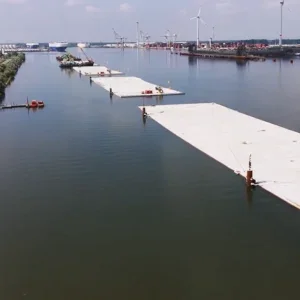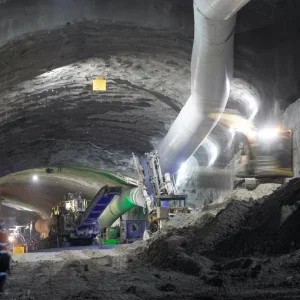
Collaboration, communication and competence were the themes of the Harding Memorial Lecture I delivered in June 2018. The lecture looked at the history and benefits of collaborative working; how we had been pointed very clearly in the direction of collaboration by Sir John Egan in 1998; what had been achieved since; and how collaborative working requires both communication and competence, with the conclusion that the time was ripe for fundamental change.
I saw Brexit and the resulting need to start thinking for ourselves as what was best for UK plc as the motivator for changes to our ways of working. Though the Grenfell disaster had occurred, I did not anticipate the impact that the Grenfell inquiry might have on our thinking about competence.
Furthermore, I did not anticipate the Covid-19 pandemic, the effect it would have on communications, and the shock waves it would send through our lives, our industry and our economy.
But I believe the picture is rosier than many might believe: I think we are making progress (though we have a way to go) so I will look below at how the requests for action, the comments, the warnings in the Harding Lecture have, or have not, been heeded.
Collaborative Working
At the end of the excellent Association of Consulting Engineers (ACE) Infrastructure Intelligence interview (22 September 2020), Sir John Armitt was asked by Andy Roberts (ACE) what one thing would result in major improvements to our infrastructure. Sir John replied without any hesitation “collaboration”.
The Road Map to Recovery published by the Construction Leadership Council (CLC) has a final phase called ‘Re-Invent’:
It is defined as: ‘Re-Invent – transforming the industry, delivering better value, collaboration and partnership, the outcomes will be a more capable, professional, productive and profitable sector which delivers better value to clients, better performing infrastructure and buildings, and competes successfully in global markets.’
Steve Bratt, CEO of ECA (Construction News 8 January 2021) writing on Lessons for our recovery identifies his first lesson as follows: “We must push strongly and quickly towards collaborative models for contracting.
The New Construction Playbook (NCP) which is promulgated as a ‘[A] compact between government and industry to set out how we will work together in the future. Only by acting together and aligning our efforts can we achieve enduring reform’. It goes on to state under the section Effective Contracting that: “We will ensure that contracts are structured to support an exchange of data, drive collaboration, improve value and manage risk”.
There are numerous other references to collaboration in the Playbook and the Cabinet Office Paper on New Models of Construction procurement (2 July 2020) refers to ‘suitable collaborative forms of contract’.
So, the need for collaboration is being recognised by the government and moves are being made in the right direction.
The Construction Playbook
This thinking on collaboration is not limited to the UK; tunnellers may have read the excellent discussion paper by JJ Reilly, former President of the American Underground Society, on Procurement of TBMs. A key conclusion was: ‘a good answer to the question of who should choose the TBM may require use of another management process – the process of alignment of the full project team, including owner designer, contractor, TBM manufacturer, and supplier and suppliers to meet key goals and objectives.’ This sounds like collaboration to me.
The NCP is an important document because it gives our civil servants a revised set of guidelines for public procurement, guidelines which allow some innovation in the delivery mechanisms for our major projects. They also introduce the concepts of social value and should-cost models into procurement, and require the use of project bank accounts, unless there is a compelling reason not to.
However, I still sense there are concepts that need to be understood and challenged such as ‘there is a best price for a job’; ‘you must have price competition’; ‘penalties are more effective than incentives.’ Also, the belief that collaboration can happen even if there are commercial barriers in place, such as prices, performance bonds and liquidated damages. Surely what is needed is a set of ICE-endorsed collaborative contracting conditions of contract. It is not an easy task and requires some innovative thought, some bravery (trust will play an essential part) and addressing resolution when things go wrong. The NEC has shown the way: Project 13 has picked up the baton, but now we need to get collaborative working into common use and produce a tunnelling and construction industry fit for all the challenges ahead.
We also must work on the selection of suitable bidders and bidding on quality.
There is some thinking yet to crystallise in these areas but perhaps we can look forward to a future time when a company’s collaborative credentials take on a new importance.
It could of course all go wrong if we try and half do it – part-collaboration does exist but will always be fragile and unlikely to realise even some of the benefits. To work, collaboration must be fair to all. We should also be careful in describing relationships as ‘collaborative’ when they are not. ‘Collaboration’ and ‘collaborative’ are terms which, these days, are used and abused, being equally applied to describe a bit of software or a traditional process which requires two parties working together.
This does a disservice to all, and risks collaboration getting a bad reputation from situations when real collaboration does not exist. This would be a great shame and should be avoided at all costs because the result could prevent the achievement of lower costs, better value and more effective risk management.
Communication
Human communication has been brought into sharp relief during the pandemic. We have better understood the stress, the anguish and the mental health issues caused by lockdowns and the inability to see loved ones. In short, we have learned the value of human contact, that communication is (as was suggested in the Harding Lecture) so much more than a text message, an emoji or even a Zoom meeting. Teams, Skype, WebEx call and Alexa will never replace loved ones.
We have also realised that education is more than the communication of knowledge and teaching lessons via the Internet, even if delivered and received competently.
On the plus side, many businesses and activities have managed to retain some continuity – construction included – and outputs close to normal have been achieved. What we would have done without the Internet is a fair question. Some may argue that we only allowed lockdown to be imposed because the Internet was there to fall back on, but then the impact of the pandemic could have been far worse had we not had restricted activities, so maybe the Internet has saved lives.
Throughout this process, we have improved our IT skills, learned how to manage meetings on Zoom, Teams or WebEx, and found out how remote working works for us individually and collectively. Are meetings as effective? I find them very sterile without body language or a lack of hands going up.
Comments and important contributions can be missed deliberately or otherwise. Bandwidth can often preclude visual contact at all, and all you have is a series of faces or initials on your screen to gauge reaction to what you are proposing. And you are never sure if the lack of feedback is because individuals do not have any or have simply forgotten to ‘unmute’.
There are other dimensions to the lack of human contact in our industry. Casual learning contact is restricted, and whereas businesses may not suffer, individuals – particularly younger team members – are not gaining knowledge the easy way. Body language, looking people in the eye, building trust and being open are the foundations of collaboration and if we ever want to take our industry forward, we will have to build communications.
Body Language
One benefit of the pandemic is that it has spawned some excellent seminars, webinars and lectures produced by a whole host of institutions and societies; these are easy to attend from home and are also free, making the decision to register easy.
However, those working from home typically focus on a screen full-time and say that early evening events (also on screen) hold no great attraction. They usually will have had enough screen time for one day.
In conclusion, the Harding Lecture comment about ‘needing to think again about our personal and business communications’ as we all return to ‘normal’ is so very valid and will require further attention as we return to a ‘new normal’.
Competence
When I delivered the Harding Lecture, I could not have foreseen that my remarks about competence becoming a hot topic, or concerns about the competence of people in charge of our projects would be brought into focus by the Grenfell Inquiry. I felt for the young project manager who had to admit that he had little experience or training in project management or the technical aspects of the project. It gave a poor impression of our industry. I am not suggesting that this situation is widespread, and I do not attempt to pillory the project manager. He was doing his best as he saw it. It is really our system that fails him.
Our quality control, assurance and management expectations are frequently set too low, and we accept these as the norm. ISO 9001 – the international standard that specifies requirements for a quality management system – requires that staff who have responsibilities in quality management are competent on the basis of training skills and experience.
The assessment of competence in the tunnelling industry has traditionally been fairly informal: a senior manager either knew the person being appointed or knew of the person, or where they had gained their experience. This is not so much the case these days, with more and larger tunnelling projects demanding large numbers of managers.
Following the Grenfell disaster, the Hackitt Review produced a number of recommendations which were taken up by the professional bodies and we now have a standard for assessing competence: Working draft only – BSI Flex 8670: v1.0 2020-09 Built environment – Overarching framework for competence of individuals. This document defines competence as: “For an individual to be considered competent, sector-specific competence frameworks should therefore require that individuals have the appropriate skills, knowledge and experience, combined with appropriate behaviours, to be able to fulfil their defined role, function or activity and carry out appropriate tasks. This is sometimes referred to in shorthand as SKEB”.
Competence Assessments
The important change to traditional thinking is the recognition of the importance of behaviour, although this was discussed in the Harding Lecture. Some may rightly say that the trigger has been high-rise buildings, but it is intended to, and I believe will, set standards across all sectors, and one could probably compare the risks of going up, with going down.
I have no problem with competence assessments; they can be a very constructive process if done with one’s line manager. When a manager puts a person in a particular role, they have in effect undertaken a competence assessment: ‘My judgement is that this person is suitable for that particular role’. Assessing competence is really just recording that decision, but the discipline of doing it can ensure we have technically-competent people driving our tunnels and any areas of weakness can be addressed expeditiously.
We have been taking steps towards enabling easier competence assessments for many years by developing standards to benchmark competence; our National Occupational Standards are used to design a qualification and define a role.
The British Tunnelling Society (BTS) has, with TunnelSkills, supported the development of vocational qualifications for ‘tunnelling site supervisor’ (already approved and in operation) and ‘tunnelling site manager’ which has been submitted for approval. These should aid the benchmarking of competence and provide a recognised qualification for those who have not taken the academic route. These qualifications cover the full spectrum of SKEB.
TunnelSkills has supported the apprentice programme with some success. Given the disruption caused by the pandemic, BTS is working with Warwick University to restart the MSc in Tunnelling and Underground Space (TUGS) in 2021, and is offering an enlarged bursary for prospective candidates. The BTS, Warwick and other universities are attempting a fast-track development of a master’s level apprenticeship in civil engineering which can include the students on the TUGS course. BTS is also again considering the case for registration of tunnellers.
Summary
Some 34 months after the Harding Lecture, we have achieved Brexit, have gone (and are still going) through a pandemic, and have a new government with a very strong mandate for change.
We are seeing some really good intentions and focus on public servants as recommended by Egan.
We have the New Construction Playbook, but we should not ‘play’ at collaboration: we need to take it forward enthusiastically. In addition, we are also making tentative moves towards developing a recognition of competence in the tunnelling sector.
Our industry has a way to go and must rise to the challenge to change and ‘Build Back Better.’ However, concentrating on competence, communications and collaboration will surely set it on the right track.







